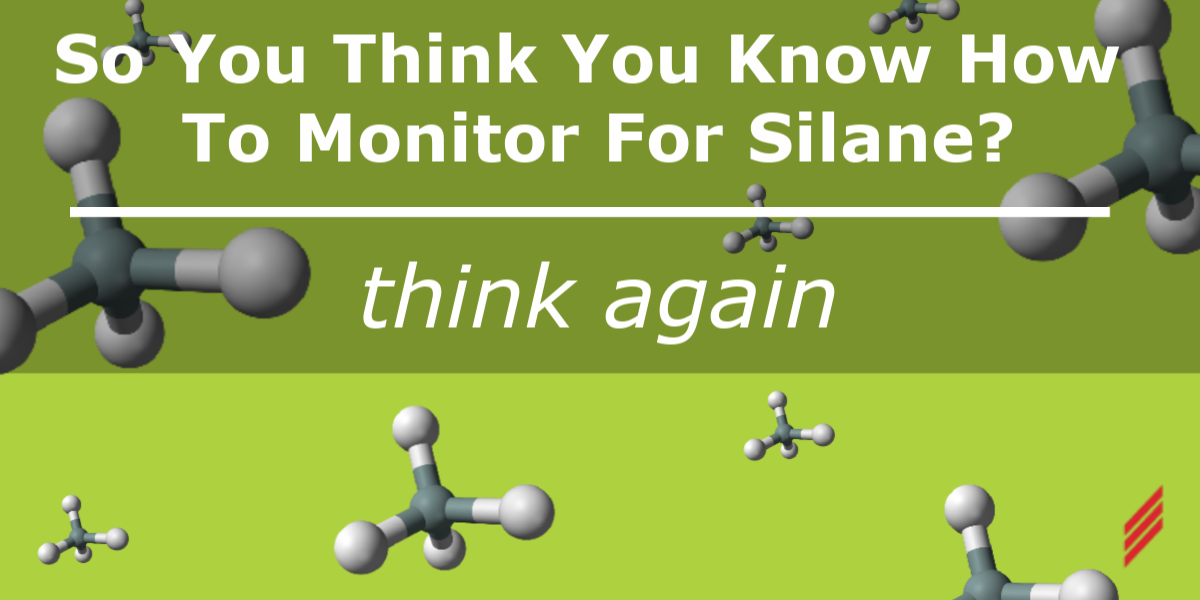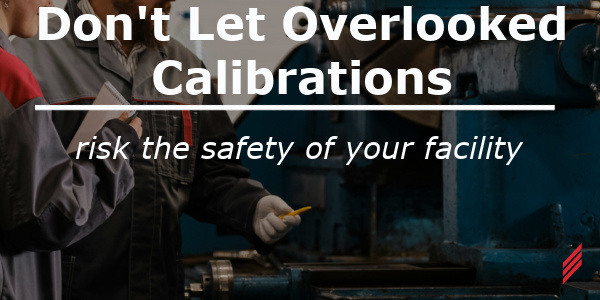So You Think You Know How To Monitor For Silane? Think Again
by John Kurowski on Aug 24, 2023 12:08:03 PM

I recently attended a SESHA (Semiconductor Environmental Safety and Health Association) New England Chapter mini-conference hosted by Axcelis Technologies in Beverly, MA. One of the presentations was by Matt Wyman from Koetter Fire Protection International (KFPI). Matt’s presentation was titled, “Testing the Responsiveness of Fire and Gas Technologies to Small Silane Leak Scenarios”. It is not my intent to repeat every detail of Matt’s presentation in this blog, but KFPI’s experiments (in conjunction with ASM International) are leading edge research that will probably result in code changes and best-practice changes. That being said, it is important to get this information to silane users in any manner possible. This blog tells you about the sudden and striking changes in my mind that I had from Matt’s presentation, but I encourage you to go directly to the SESHA web-site and view Matt’s presentation for yourself. Membership to SESHA is free, and you will be able to see many informational presentations, including the one mentioned above.
Many codes reference CGA (Compressed Gas Association) G-13 as a guide to safely handle silane. In G-13, there are a few places that define the use of UV/IR detectors to monitor for silane fires. There are many different UV/IR detectors to choose from, and in Matt’s experiments, he tests a few of the UV/IR sensor options in an actual Gas Cabinet (GC) leak with a resulting fire. IF you have a leaking silane fitting, and IF the leak results in a silane fire (not all leaks result in a fire), then Matt’s experiments show that most UV/IR devices WILL NOT detect a silane fire. Let that sink in for a few seconds. Most UV/IR devices tested, WILL NOT detect a silane fire inside a GC. Matt’s conclusion was that a silane fire creates so much particulate, that the silane fire particles obscure the optics on the UV/IR device such that it renders the UV/IR device incapable of “seeing” the fire. This, is big news.
Matt’s team also tested HSSD (High Sensitivity Smoke Detector) technology in a GC silane fire scenario. Again, IF you have a leaking silane fitting, and IF the leak results in a silane fire, then Matt’s experiments show that HSSD WILL detect a silane fire. Well, this is new news. HSSD is not defined by the codes or best practice documents as a method to detect a silane fire. Matt acknowledges this last point, and also mentions that there are many settings on HSSD that must be considered if using HSSD to detect a silane fire. My take-away on HSSD; at the very least, reduce the delay setting on HSSD from 10 seconds to 1 second; and this is a valid technology to detect a silane fire.
Matt and his team also used chemically treated tape technology to detect silane (in a GC) if the silane is still a gas and not yet a fire. The conditions are different here (wake up): IF you have a leaking silane fitting, and IF the leak DOES NOT result in a silane fire, then Matt’s experiments show that chemical tape technology WILL detect silane gas. There’s a problem however. A chemically treated tape (in Matt’s experiment) takes 13 seconds to detect the unburned silane gas. Matt specifically pointed out this 13 second delay in his presentation and said the 13 second delay is normal for chemically treated tape technology. Do you want silane leaking for 13 seconds before your gas detection tells you about the leak? Probably not. However, you must then add the transport time if you use long lengths of FEP tubing. As an example, if you had a 400-foot long tube, you would add another 60 seconds to the time it takes to detect a silane gas leak. Do you want silane leaking for 73 seconds before your gas detection tells you about the leak? Probably not. Read on.
Matt and his team then tried single point electrochemical cell monitoring technology to measure a silane gas leak (in a GC). The conditions are the same as the chem tape experiment: IF you have a leaking silane fitting, and IF the leak DOES NOT result in a silane fire, then Matt’s experiments show that single point electrochemical cell technology WILL detect silane gas. The important point to know here is that single point electrochemical cell monitoring technology takes much less time to detect the silane gas than the chem tape technology. My take-away on measuring silane gas before you have a fire; use single point electrochemical cell technology and leave the chemically treated tape monitoring technology for other toxic gases.
This blog is a short summary of the latest experiments done by KFPI (in conjunction with ASM International). If you use silane, please become a SESHA member, and then read Matt Wyman’s presentation for yourself. For Safety sake, you owe it to yourself and to the people working around you to know this information. Matt’s presentation will also inform you of which codes will be changing as a result of these experiments, which groups have been notified of the experimental results, and if you need to have a discussion with your Authority Having Jurisdiction (AHJ) if you plan to make some changes to your silane monitoring.
In closing, Eugene Ngai of Chemically Speaking, LLC was sitting in front of me during the presentation on August 1st. Eugene is famous for his work in silane gas fires (and the exciting fire and explosion videos). At the end of Matt Wyman’s presentation, Eugene made a point to compliment Matt on the thoroughness of his experiments. When you have experts on silane safety research in the same room complimenting each other, it’s time for the rest of us to listen.
About the Author
John has a B.S. in Chemical Engineering from Penn State and a M.S. in Manufacturing Engineering from RPI. Prior to coming to Hallam-ICS, John had 30 years of experience working in Manufacturing/Process/Facilities Engineering for printed circuit board and semiconductor manufacturing. As a Senior Engineer at Hallam-ICS, John is responsible for the design and specification of Toxic Gas Monitoring Systems. He participates in all project design phases from concept through construction documents.
Read My Hallam Story
About Hallam-ICS
Hallam-ICS is an engineering and automation company that designs MEP systems for facilities and plants, engineers control and automation solutions, and ensures safety and regulatory compliance through arc flash studies, commissioning, and validation. Our offices are located in Massachusetts, Connecticut, New York, Vermont, North Carolina , Texas and Florida and our projects take us world-wide.
You May Also Like
These Related Stories

Don’t Let Overlooked Calibrations Risk the Safety of Your Facility

Hitting the Trail (It Isn't What You Think)



No Comments Yet
Let us know what you think